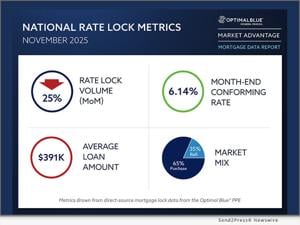AI Industry Consolidates as Major Firms Forge Partnerships

The landscape of the artificial intelligence (AI) sector is rapidly changing as companies merge operations and resources, creating vast corporate entities. Recently, OpenAI announced a significant agreement with AMD, valued at “tens of billions of dollars.” This deal involves OpenAI purchasing a substantial number of AMD’s microprocessors while also acquiring up to a 10% stake in the semiconductor manufacturer.
This merger of interests is emblematic of a broader trend within the AI industry, where the lines separating AI developers and infrastructure providers are increasingly blurred. Major players continue to compete with one another, yet they are also collaborating in ways that reshape the industry. This evolving ecosystem has drawn both praise and criticism, with detractors labeling it a “shell game.”
The implications of this consolidation are significant. As OpenAI CEO Sam Altman stated in an interview with the Wall Street Journal, “We are in a phase of the build-out where the entire industry’s got to come together and everybody’s going to do super well.” Altman emphasized that this collaboration will manifest in areas such as chips and data centers, indicating a shift towards a more integrated operational model.
OpenAI’s recent partnerships have sparked a wave of investment across the sector. In a noteworthy agreement, Nvidia revealed plans to invest up to $100 billion in OpenAI over several stages. This funding is earmarked for the construction of data centers filled with Nvidia’s advanced systems. Additionally, Nvidia has reached a $5 billion investment deal with Intel, which is grappling with challenges in its manufacturing capabilities.
OpenAI has also secured funding from other major firms, including Oracle and SoftBank, to support its ambitious Stargate data center project in the United States. Furthermore, the company has received substantial investment from the United Arab Emirates for a data center in Abu Dhabi. These financial engagements reflect OpenAI’s foundational relationship with Microsoft, which has undergone restructuring to enhance collaboration.
Competition in the AI sector remains fierce, as rival Anthropic has attracted significant investments from both Google and Amazon. Interestingly, OpenAI also relies on services from Google Cloud, while Microsoft utilizes AI technology from Anthropic for some of its products. This intricate web of partnerships highlights the interconnected nature of the industry.
The involvement of the U.S. government adds another layer of complexity to the landscape. The Biden administration, through the CHIPS Act, has begun funding domestic chip manufacturing efforts. The Trump administration previously mandated that the chipmaker Intel provide the government with a 10% ownership stake in return for CHIPS grants aimed at bolstering its production capacity.
Historically, periods of rapid growth and speculation, such as the expansion of railroads in the late 19th century, have often been followed by corruption and regulatory scrutiny. Currently, the government has positioned itself as a participant in the AI sector, raising questions about the potential for future oversight.
Concerns about investment stability also loom large. The significant dollar amounts involved and instances of investment circularity—where one firm finances another to purchase its products—introduce risks reminiscent of the dot-com bubble and the 2008 financial crisis. These past events featured opaque financial mechanisms that led to widespread economic repercussions.
As AI companies become more intertwined, the potential for a single setback to escalate into a widespread crisis increases. OpenAI, a prominent player with considerable influence, is currently a cornerstone of the AI industry and a significant contributor to the U.S. economy. Should it falter or lose investor confidence, the ramifications could be severe, affecting numerous stakeholders across the sector.






